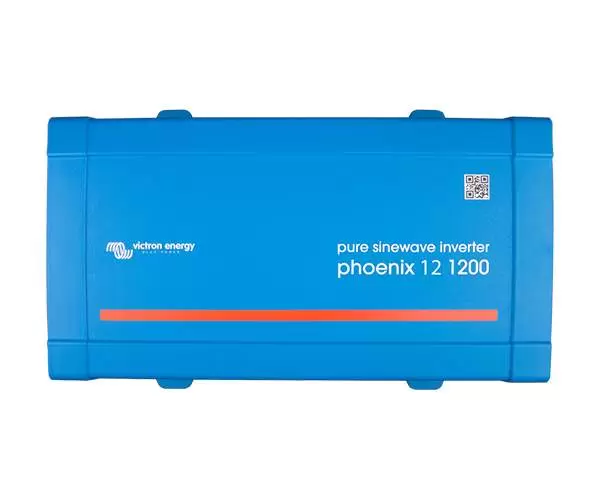Optimising your energy systems has never been more crucial in a world increasingly driven by technology and efficiency. Enter the Victron Smart Shunt—a game-changing device redefining how we monitor and manage our power usage. Whether you’re an adventurous camper looking to maximize your solar setup or a boater who wants precise battery management on the high seas, this compact yet powerful tool is here to unlock a new insight into your energy consumption. In this comprehensive guide, we’ll delve into what makes the Victron Smart Shunt essential for anyone serious about harnessing their power—exploring its features, installation tips, and practical applications.
Introduction to the Victron Smart Shunt
If you’ve ever felt the frustration of a dead battery at the worst possible moment, you’re not alone. Battery management can be tricky, especially if you’re off the grid or on an extended adventure. The good news? Enter the Victron Smart Shunt—a game changer in battery monitoring systems that keeps your power source healthy and charged.
Imagine having access to real-time data about your smartphone’s battery health, charge levels, and overall performance. It’s like having an expert technician with you at all times! Whether you’re a seasoned boater, van lifer, or someone who loves camping under the stars, understanding how to harness this technology can unlock new levels of convenience and safety for your adventures.
So, let’s explore everything you need to know about this remarkable device—from its standout features to practical installation tips and success stories that showcase its effectiveness in action. Get ready to empower yourself with knowledge as we explore the world of the Victron Smart Shunt!
Features and Benefits of the Victron Smartshunt
The Victron Smartshunt offers many features designed to enhance your battery management experience. Its ability to measure current, voltage, and power provides real-time insights into your system’s performance. You can monitor the state of charge (SOC) with precision.
One standout feature is Bluetooth connectivity. This allows you to access data from your smartphone through the VictronConnect app. No more squinting at tiny displays; all vital information is at your fingertips. Another benefit is its versatility. The Smart Shunt works seamlessly with various battery types, including lithium-ion and lead-acid models, making it ideal for diverse applications.
Additionally, it comes equipped with programmable alarms that alert you when specific thresholds are reached—keeping you informed and proactive about potential issues. With these tools, managing energy resources becomes more straightforward and efficient.
Installation Process for the Smart Shunt
Installing the Smart Shunt can be straightforward, even for those new to battery monitoring systems. Start by gathering your tools: a screwdriver, wire cutters, and a multimeter.
Begin by disconnecting your battery. Safety first! This step is crucial to prevent any electrical mishaps during installation. Next, identify where you will mount the shunt. It should be close to your battery bank for accurate readings. Secure the shunt in place using screws or adhesive tape.
Connect the negative terminal of your battery to the shunt’s negative input. Then, attach an appropriate gauge wire from the shunt’s output to your load circuits. Ensure all connections are tight and secure. After wiring, reconnect your battery and download the Victron app. The setup process will guide you through configuring settings for optimal performance.
Real-life Applications and Success Stories of Using the Smart Shunt
The Victron Smart Shunt has transformed countless systems, proving its worth in diverse applications. One notable success story comes from a marine enthusiast who installed the shunt on his sailboat. He could monitor his battery status in real-time while out at sea, ensuring he never ran low during long voyages.
In another instance, an off-grid cabin owner used the Smart Shunt to optimize solar energy production and consumption. By tracking usage patterns and battery health through the app, they significantly reduced their reliance on backup generators.
An RV traveller shared how the Smart Shunt enhanced their adventures by providing precise data on power usage. This information allowed them to plan their trips more efficiently and avoid unexpected power outages when exploring remote areas. These stories illustrate just a few of the ways users have harnessed this powerful tool for better control over their energy management systems.
Troubleshooting Common Issues with the Smartshunt
Troubleshooting the Smartshunt can be straightforward with guidance. One common issue is inaccurate readings. This might stem from improper installation or wiring errors. Double-check connections and ensure the shunt is correctly positioned in your battery setup.
Another frequent concern involves connectivity problems with the app. If you’re having trouble, verify that Bluetooth is enabled on your device and ensure you’re within the Smart Shunt range. If data isn’t updating, try resetting the device through the app settings. This simple step can often resolve minor glitches.
Lastly, if you encounter persistent issues, consult user forums or contact Victron’s customer support for expert advice. Engaging with others who have faced similar challenges can provide valuable insights and solutions tailored to specific needs.
Comparison to Other Battery Monitoring Systems
Several key differences emerge when comparing the Victron Smart Shunt to other battery monitoring systems. Many alternatives typically offer fundamental voltage and current readings. However, the Smart Shunt delves deeper with its capacity to report the state of charge (SOC) and energy consumption in real time.
Another advantage is its Bluetooth capability. This feature allows easy data access via a smartphone app, making it user-friendly. Other systems require a separate display or complicated setups. Installation also plays a significant role. The Victron Smart Shunt is designed for straightforward installation without specialized tools, while some competitors can be cumbersome or require professional assistance.
Lastly, accuracy matters immensely in battery management. The precision of the Smart Shunt’s measurement often surpasses that of simpler models, ensuring users get reliable information about their power usage and battery health.
Tips for Maximizing the Potential of Your Victron Smart Shunt Ip65
The Victron Smart Shunt is an innovative and powerful device that can significantly enhance your energy management system. It allows you to monitor and control the energy flow in your electric system, giving you complete control over your energy usage. However, to truly unlock its potential, there are some tips and tricks that can help you maximize its capabilities. In this section, we will discuss some key tips for maximizing the potential of your Victron Smart Shunt IP65.
1.Understand Your Energy Usage:
Before utilizing the Victron Smart Shunt, it is essential to clearly understand your energy usage patterns. This will help you identify which appliances or devices are consuming the most energy and where you can make changes to reduce consumption.
2. Set Up Appropriate Alerts:
The Victron Smart Shunt has a mobile app that allows you to monitor real-time data and receive alerts when certain thresholds are reached. Take advantage of this feature by setting up appropriate alerts when your battery levels are low, or there is excessive power consumption.
3. Monitor Historical Data:
The smart shunt also stores historical data about your energy usage. Use this information to identify any trends or patterns in your consumption and adjust accordingly.
4. Calibrate Properly:
To ensure accurate readings from the intelligent shunt, it’s crucial to calibrate it properly during installation. Ensure all connections are secure and follow the calibration instructions provided by Victron.
5.Utilize Multi-Battery Settings:
Use the intelligent shunt’s multi-battery settings if your system has multiple batteries. This allows for separate monitoring and control of each battery bank, allowing for more efficient power use.
By following these tips, you can fully maximize the potential of your Victron Smart Shunt IP65 and take control of your energy management system. With its advanced features and customizable options, this device has the power to improve your energy efficiency and significantly save on costs. So don’t hesitate to unlock its full potential today!
Conclusion
The Victron Smart Shunt represents a leap forward in battery monitoring technology. Its advanced features give users valuable insights into their energy consumption and battery health. This understanding helps optimize power usage, prolonging battery life. Real-life success stories highlight how the Smart Shunt has transformed experiences for boaters, RV enthusiasts, and off-grid homeowners. By effectively tracking performance metrics, they can make informed decisions that enhance efficiency and reliability.
FAQs
1. What is the Victron Smart Shunt?
The Victron Smart Shunt is a compact and versatile battery monitor designed to accurately measure and track your battery’s state of charge, voltage, current, power, and more. It can be used for various applications, such as RVs, boats, off-grid cabins, or any other mobile or stationary system that requires precise monitoring of battery health.
2. How does the Victron Smart Shunt work?
The Smart Shunt uses advanced technology to measure the current flow in and out of your batteries. It connects between the negative terminal of your battery bank and the ground connection on your load side. The shunt then measures the voltage drop across its terminals to determine your battery’s state of charge.
3. Can I use the Victron Smart Shunt with any battery?
Yes, the Smart Shunt is compatible with all types of batteries—lead-acid (flooded, AGM, Gel), lithium-ion (LiFePO4), and even supercapacitors. However, using a separate shunt for each type of battery chemistry is recommended.




